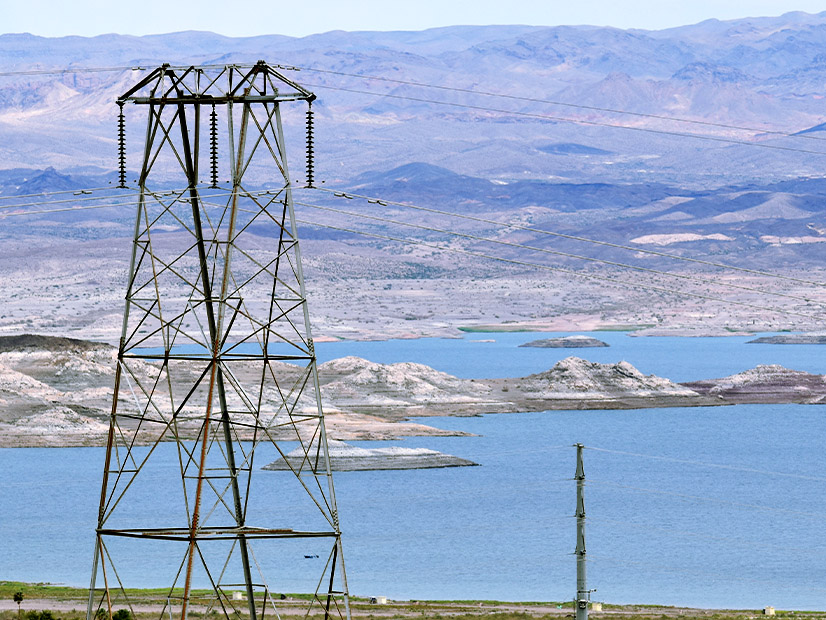NV Energy and several stakeholder groups have weighed in on how Nevada regulators should evaluate a request from the utility to join a day-ahead market or RTO.
NV Energy and several stakeholder groups have weighed in on how Nevada regulators should evaluate a request from the utility to join a day-ahead market or RTO.
Several of those who filed comments with the Public Utilities Commission of Nevada noted that PUCN faced a similar issue in 2014 — when NV Energy asked for approval to join CAISO’s Western Energy Imbalance Market (WEIM).
NV Energy made that request through an amendment to its energy supply plan. Some stakeholders said that process could also work well for considering a request to join a day-ahead market.
But joining an RTO raises new issues, stakeholders said, and PUCN should consider rulemaking to detail how such a request would be considered.
“NV Energy’s participation in the day-ahead market is analogous to its current participation in the WEIM in that NV Energy would not transfer operational control over any assets … and current state regulatory authority would be left unchanged,” Ben Fitch-Fleischmann of Interwest Energy Alliance, an association of utility-scale renewable energy developers, said in written comments.
“In contrast, joining an RTO may require a host of changes, including the development of joint transmission tariffs, consolidation of balancing area authority and operations, and changes to how transmission planning would be coordinated, and costs allocated,” Fitch-Fleischmann added.
PUCN will hold a workshop March 4 to discuss a process for reviewing an RTO or day-ahead market request.
Legislative Mandate
Senate Bill 448 of the Nevada Legislature’s 2021 session directs NV Energy to join an RTO by 2030, unless PUCN waives the requirement or grants a delay. A waiver or delay is allowed if the utility can’t find “a viable and available” RTO to join or determines that joining an RTO wouldn’t be in the best interests of the utility and its customers.
PUCN opened a docket on the matter last year and, in January, ordered NV Energy to file comments by Feb. 16 answering several questions about how the commission should evaluate a request to join an RTO. Stakeholders had the opportunity to comment as well.
In NV Energy’s filing, Deputy General Counsel Timothy Clausen noted the utility’s promise in a 2013 proceeding to seek PUCN approval before participating in an RTO- or ISO-run market. But a procedure for seeking approval wasn’t detailed at that time.
In 2014, NV Energy asked for approval to participate in the WEIM through an amendment to the portfolio optimization procedures in its energy supply plan (ESP).
NV Energy said the ESP could also be used to request approval to participate in a day-ahead market or RTO. But certain aspects of joining an RTO or day-ahead market might need approval through the IRP process, the utility said. Those could include building or procuring resources or transmission to meet resource adequacy requirements.
Day-ahead Market Timeline
Some commenters worried that PUCN rulemaking to create a new approval process could delay NV Energy’s participation in a day-ahead market. CAISO’s Extended Day-Ahead Market (EDAM) and SPP’s Markets+ day-ahead offering are both expected to launch in 2026.
“Any delay in obtaining permanent regulations can impact the timeliness of NV Energy joining a day-ahead market. This delay would affect NV Energy’s customers who, in the interim, would miss out on benefits anticipated by joining a day-ahead market,” Justina Caviglia, an attorney representing Google, said in written comments. The company has data centers in Nevada.
But Advanced Energy United argued against using the IRP or ESP process for evaluating a request to join a day-ahead market or RTO.
“The regulations governing ESP/IRP [do] not currently contain requirements or standards for the evaluation of several relevant criteria, including market pricing policies, transparency and oversight, stakeholder and policymaker engagement and input, or respect for state policy mandates,” AEU director Brian Turner said in written comments.
And adding to the already complex subject matter of an IRP could be overwhelming for NV Energy, PUCN and stakeholders, AEU said.
If the commission starts rulemaking now, AEU said, regulations could be in place this summer or fall and NV Energy could apply for day-ahead market approval late this year or in early 2025.



